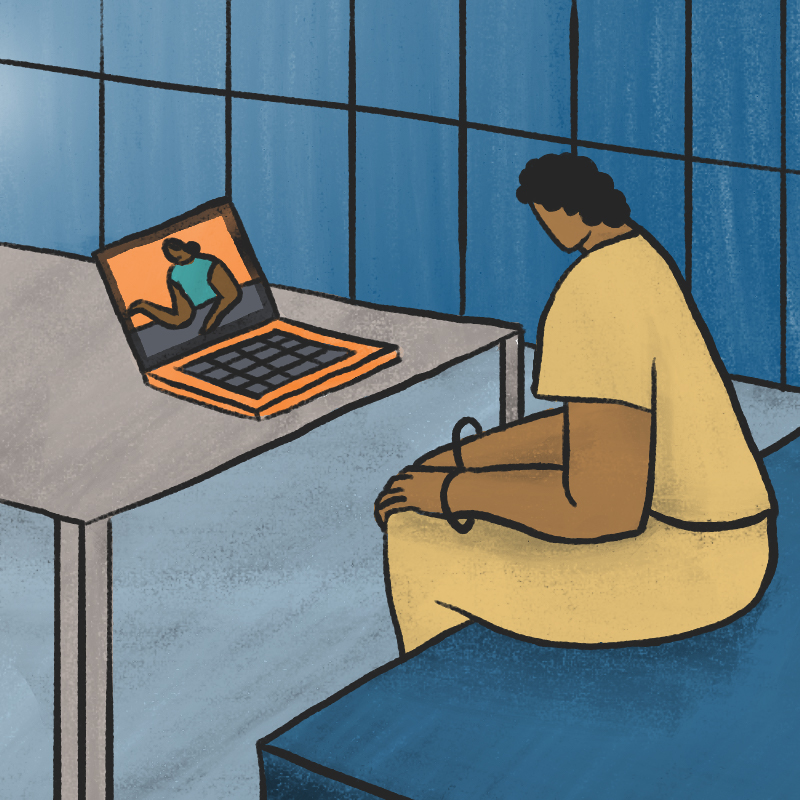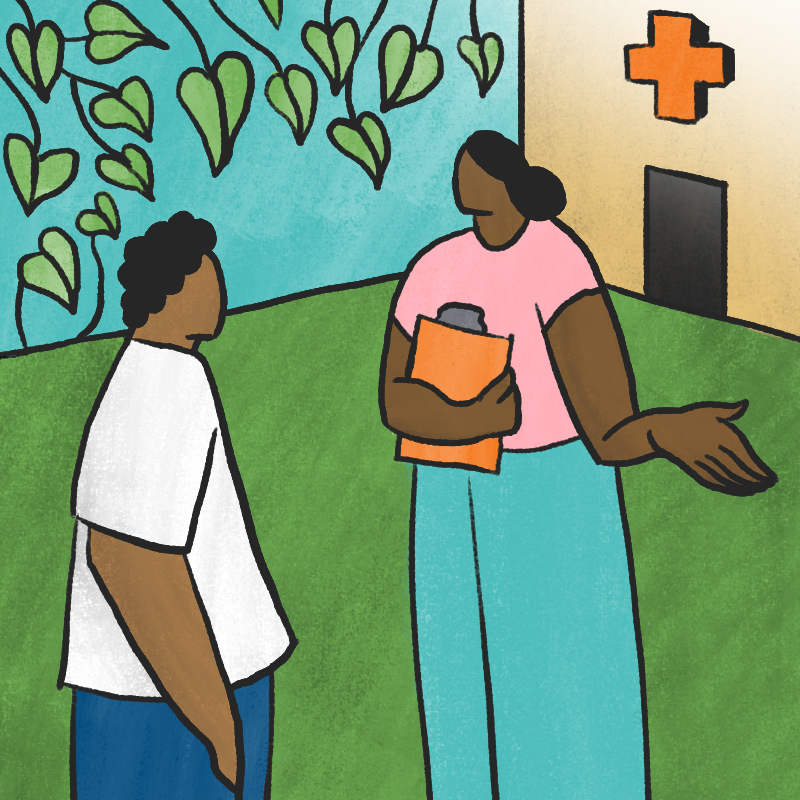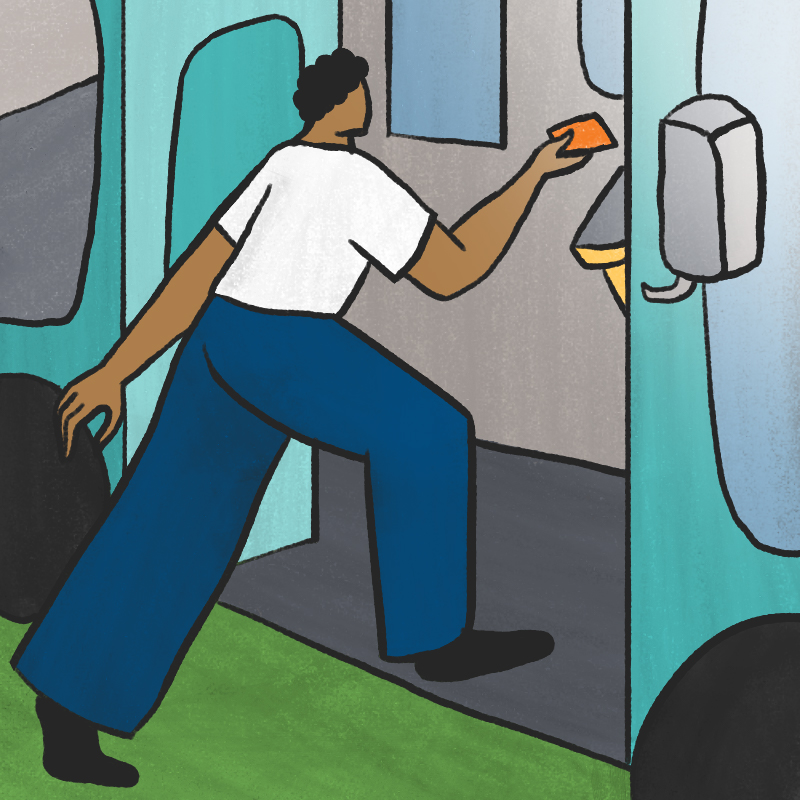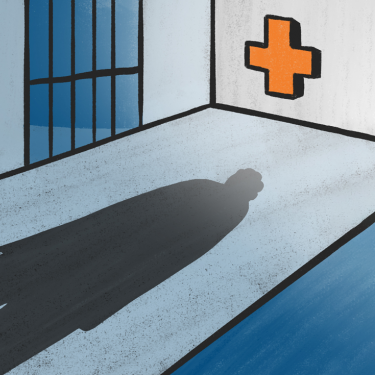“A lot of people feel isolated once they get out of jail or prison. And if you can contact them before they are released, so they know there’s a person that’s going to be calling and helping link them to resources, it can help reduce the isolation,” says Temple Ellis.
A social worker for CareSource, Ohio’s contracted Medicaid managed care plan, Ellis helps incarcerated people who are about to be released from jail or prison obtain regular health care when they transition back to life on the outside.
“We want them to understand that they have Medicaid insurance now, and they can actually go to see a doctor about their concerns,” Ellis explains.
What Ellis does is referred to as jail or prison “in-reach,” a care management strategy that helps inmates with health needs enroll in Medicaid coverage. Many states that have expanded Medicaid eligibility under the Affordable Care Act are enrolling incarcerated people in Medicaid health plans before their release date to ensure coverage goes into effect immediately upon release, as detailed in a Commonwealth Fund report.
The coronavirus pandemic has complicated this and other attempts to ensure that people in the criminal justice system receive health care. Most of the biggest outbreaks of COVID-19 are in correctional facilities. In May, the House of Representatives introduced a bill to allow Medicaid to cover services provided to incarcerated people 30 days before their release from prison or jail, but the Senate has yet to act. Several states have sought permission to have Medicaid cover COVID-19 testing and treatment for individuals incarcerated in jails and prisons with matching federal funds; however, none of these request have been approved to date.
How in-reach programs work
In-reach programs help ensure that people are able to establish a relationship with a primary care provider, identify health conditions, transition medical records, and set up community-based care after release. Around 80 percent of people discharged from correctional facilities have chronic medical or psychiatric conditions or substance use disorders. Improving health care access can improve health outcomes for this population, as well as reduce the risk of recidivism, unnecessary hospitalizations, and emergency department visits.
Having Medicaid coverage, however, doesn’t necessarily mean people will seek the health care they need. Many formerly incarcerated individuals face a number of challenges in the months following their release — getting a driver’s license, finding a job, coping with substance use problems. In-reach care managers like Ellis assist newly released inmates with a variety of issues that directly and indirectly affect health.

In Ohio, CareSource started its Medicaid Pre-Release Enrollment Program as a pilot in 2015. As of 2019, more than 22,000 people have been enrolled. Christina Kalnicki, who oversees the program, explained how it works. Inmates are pre-enrolled in a Medicaid health plan between 30 and 60 days before release. Those with a “critical risk indicator” — a chronic condition or substance use disorder, for example — are eligible for in-reach care management.
Medicaid care managers from CareSource meet with these inmates prior to their release to begin making arrangements for the resources they’ll require after they leave prison. CareSource works with prison staff to arrange video conferences between inmates and care coordinators – technology that has proved particularly useful during the COVID-19 crisis. The inmate’s health history is discussed, then the care manager develops a transition plan that covers doctors’ appointments and social needs like housing and transportation.
Challenges to Finding People Post-Release
CareSource care managers in Ohio reach out to their clients shortly after they are released from jail — ideally within five days — to follow up with them. However, establishing contact post-release is challenging: many inmates are simply unable to provide an address or phone number.
“One of our biggest barriers is that we can’t find them,” says Ellis, the CareSource care manager. “Things are up in the air about where they are going to land and when they will have access to a phone.”

When she doesn’t hear from clients, Ellis tries calling their emergency contacts. But not all inmates provide this information during their intake video conference. “Sometimes they will be candid and say, ‘I don’t really have anyone to contact,’” Ellis says. “In those cases, we ask them to give us a call once they get released and get settled.”
Since Ellis’s number is listed on the transition plan, she has received calls from clients as long as a month after they are released. “They say, ‘I finally got a phone. I’m so sorry it took me so long to get a hold of you, but you told me to call you once I got out, so I’m calling you.’”
Social and Behavioral Health Needs
Elizabeth Beem, another CareSource care manager, has tried another approach to connect with her clients when she doesn’t have their contact information – showing up at their doctors’ appointments. Beem has coordinated care for people who have spent most of their lives in prison. They’ve likely never have had an email address or sent a text message — an enormous disadvantage when trying to find a job and a place to live. While these are not strictly medical issues, they do have an impact on health, as the literature shows.
One of Beem’s clients had been incarcerated for 32 years and suffered from post-traumatic stress disorder. Beem helped the man obtain a bus pass so he could get to his doctors’ appointments and got him a replacement birth certificate and social security card.

“A lot of the things we take for granted, they don’t have,” she says.
To take full advantage of the opportunity Medicaid expansion creates for ex-inmates to obtain needed care, states are rolling out a cohort of other strategies, in addition to in-reach care management. These include:
- data exchange, to ensure providers are notified when someone is leaving jail or prison
- use of peer-support specialists who have experienced incarceration
- specialized training for providers who work with the formerly incarcerated.
Such strategies can help reduce recidivism and related costs, as well as unnecessary emergency department visits and hospitalizations.
Ellis believes the CareSource program in Ohio also provides ex-inmates with something that is more difficult to measure: hope. For people emerging from prison, “the fact that someone out there can actually explain to me how to access community resources is reassuring,” she says. “I think that helps them have a little bit more hope for the future.”
